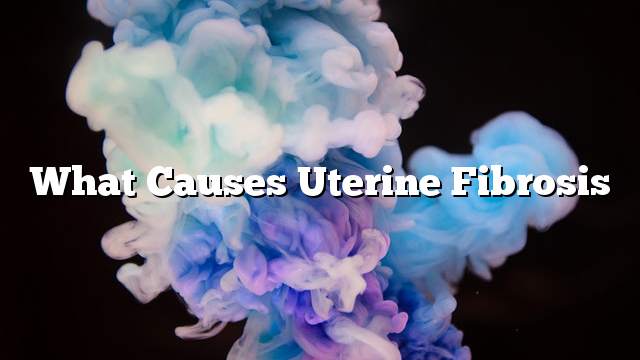Cervical fibrosis is only a benign tumor, not a malignant tumor. The main cause of cirrhosis is not yet known, but due to the secretion of the female hormone (estrogen), this hormone increases its growth. The most vulnerable women are those over the age of 40 and those over the age of 20 for African women, and teenage girls rarely inflicting uterine fibrosis.
Age increases the growth and enlargement of muscle fibers in the uterus, forming a single muscle mass or several round masses of varying sizes.
The severity and quality of the symptoms varies depending on the size of the fibers and their location in the womb. Some may not show concrete symptoms, but others have symptoms such as pain and lower abdominal pain. They may be accompanied by a desire to urinate continuously, as well as continuous bleeding even after the end of the menstrual cycle. And accompanied by disturbances in the menstrual cycle.
The causes of fibrosis in the uterus include the genetic factor, family history (presence of uterine cirrhosis in the family), race (African women are more prone to uterine fibrosis than others), drinking heavily, high blood pressure, Normal blood, repeat bacterial infections in the uterus.
Pregnancy may help to reduce the appearance of fiber, as in the case of pregnancy may increase the fiber during the first three months of it and then embolize after birth.
Use of oral contraceptives reduces the risk of cervical fibrosis, as will be shown later.
One of the most serious complications of cirrhosis of the uterus, complications during pregnancy may lead to miscarriage, may lead to the inability to reproduce and continuous bleeding leads to blood weakness and anemia.
Before we discuss how to treat, we must mention methods of prevention of cirrhosis:
1. Maintain normal and ideal weight, because weight gain increases the risk of cirrhosis by three times.
2. Exercise.
3. Do not eat too much red meat.
4. Eat lots of vegetables, especially green ones.
the cure :
1. The doctor may resort to surgery to treat cirrhosis of the uterus, especially when there is a suspicion of cancerous malignant tumor, including:
- Complete hysterectomy.
- Fibroblastectomy only.
- Remove them by laser or by freezing using liquid nitrogen.
- Stop feeding the fiber by blocking the feeder artery.
2. Use of medicines: Here is the use of hormone therapy, including:
Hormones to reduce the estrogen ratio, and this leads to women in the phase (menopause imaginary), and it helps to remove the fibers as women in menopause embedding the fibers, but this treatment is ineffective as the fibers come back after the end of treatment (It lasts up to six months at most) and if it goes on more than that, the woman is prone to osteoporosis.
The pill, which controls the hormone estrogen and regulates the menstrual cycle and some of them reduce bleeding, and most of them reduce the risk of infection and help cure it.
